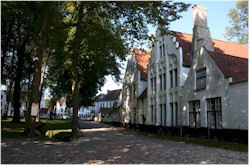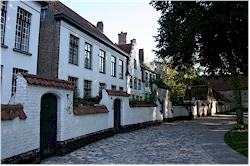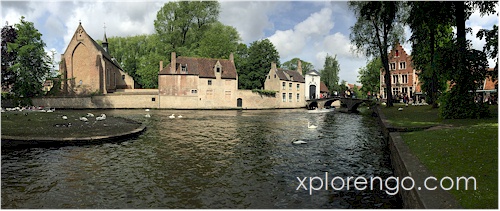|
Picture: inside the beguinage of Bruges |
|
» Eating » Sleeping facilities » Going out in Bruges » Fixed events » Beguinage » Belfry and halls » Chapel of the Holy Blood » Court of the Princes » Dunes abbey » Guild houses of Bruges » Hospices of Bruges » Jerusalem church » Nation houses » Our Ladies church » Poortersloge » St-Anna's church » St-Donatian's cathedral » St-John's hospital » St-Saviour's cathedral » Town gates » Town hall » Windmills of Bruges » Complete overview... » Archeology museum » Brangwyn museum » Brewery museum » Chocolate museum » Diamant museum » Folklore museum » Frites museum » Groeninghe museum » Guido Gezelle museum » Halve Maan » Lace museum » Lamps museum » Memling museum » Museum of Fine Arts » Salvador Dali museum » St-Janshuismill » St-John's hospital » Complete overview... » Boterhuis » Boudewijn Seapark » Burg » Canals (Reien) » Coupure » De Garre » Grote Markt » Historium » Huidevettersplein » Jan Van Eyckplein » Lake of Love (Minnewater) » Rozenhoedkaai » Simon Stevinplein » 't Zand » Complete overview...
|
The béguinage of Bruges
TIP: the site is particularly beautiful in spring when daffodils are sticking their heads above the grass in the central square.
There are no longer béguines living here but there still is monastery life since Benedictine nuns opened a convent on the premises in 1927. Location: Begijnhof 30
Picture 1 and 2: inside the
beguinage
|
» getting to Bruges » transport, tours, links,...
|
|
© xplorengo.com. Information is provided from the location and various sources, we do not hold any responsibility with regard to information provided by others. xplorengo is not a travel agency and does not promote or organize trips we therefore hold no responsibility with regard to third parties that promote their services via us. No information or pictures can be copied or distributed in any way without written permission of xplorengo.com. All pictures are made and copyrighted by Hendrik De Leyn unless mentioned otherwise [Contact information]. |

 Brief history.
This béguinage was founded in 1244 by Margaretha of
Constantinopel and was then located outside the town walls of
Bruges. In 1299 it received the title "princely béguinage"
when it came under the authority of the French king Philip the
Fair. Also at the end of the 13th century when the second
town walls were built, the béguinage was incorporated within the
town walls. The original church burnt down at the end of
the 16th century and was rebuilt at the beginning of the 17th
century. Its present shape largely dates back to that
period. The entire complex has been reshaped during the
centuries with the oldest houses dating back to the 16th century.
Brief history.
This béguinage was founded in 1244 by Margaretha of
Constantinopel and was then located outside the town walls of
Bruges. In 1299 it received the title "princely béguinage"
when it came under the authority of the French king Philip the
Fair. Also at the end of the 13th century when the second
town walls were built, the béguinage was incorporated within the
town walls. The original church burnt down at the end of
the 16th century and was rebuilt at the beginning of the 17th
century. Its present shape largely dates back to that
period. The entire complex has been reshaped during the
centuries with the oldest houses dating back to the 16th century.